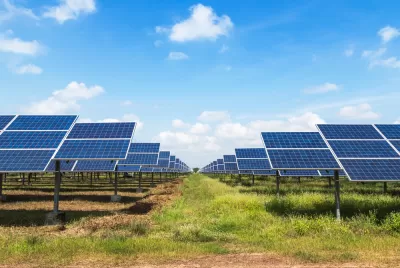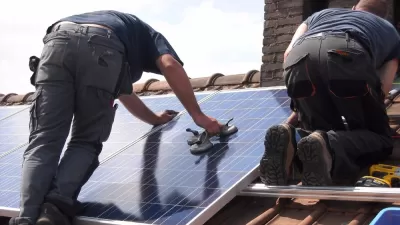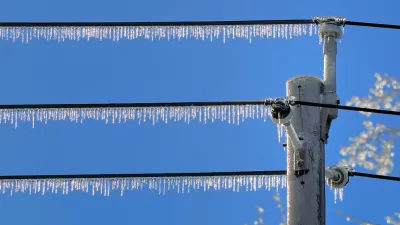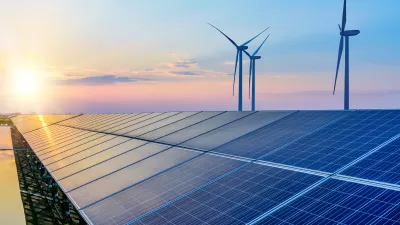One of solar’s biggest challenges is getting the energy where it needs to go.

The solar energy industry is growing by leaps and bounds as local utilities and companies that operate energy-guzzling data centers seek out renewable energy sources, report Spencer Kimball and Gabriel Cortés for CNBC.
“But renewables face a massive bottleneck to get connected to the grid, and building out transmission lines to support the growth poses a big challenge,” the authors add. Renewable energy sources remain just 3.9 percent of the nation’s power mix in 2023, and the nation’s aging power infrastructure is struggling to keep up with demand, which is growing in part due to the growth of data centers as well as rising temperatures and growing populations.
While “Nearly 2,500 gigawatts of solar, wind and battery projects were requesting connection in 2023, almost double the entire installed capacity of the current U.S. power plant fleet,” one analyst notes that “The rate by which renewables are deployed would need to at least triple to achieve 90% clean electricity over the next decade.” Plants that came online in 2023 took roughly five years to complete, and just 20 percent of projects with applications submitted between 2000 and 2018 were completed.
But solar is making significant gains, too. “In California, for example, solar energy represented more than 50% of the state's power supply from 7:45 a.m. until 5:25 p.m., peaking at about 18 gigawatts or 64% of supply around 1 p.m., according to Grid Status, which tracks major U.S. grids in real time.”
FULL STORY: Solar is growing faster than any electricity source as Big Tech seeks clean energy for data centers

Study: Maui’s Plan to Convert Vacation Rentals to Long-Term Housing Could Cause Nearly $1 Billion Economic Loss
The plan would reduce visitor accommodation by 25,% resulting in 1,900 jobs lost.

North Texas Transit Leaders Tout Benefits of TOD for Growing Region
At a summit focused on transit-oriented development, policymakers discussed how North Texas’ expanded light rail system can serve as a tool for economic growth.

Using Old Oil and Gas Wells for Green Energy Storage
Penn State researchers have found that repurposing abandoned oil and gas wells for geothermal-assisted compressed-air energy storage can boost efficiency, reduce environmental risks, and support clean energy and job transitions.

Private Donations Propel Early Restoration of Palisades Playground
Los Angeles has secured over $1.3 million in private funding to restore the Pacific Palisades playground months ahead of schedule, creating a modern, accessible space that supports community healing after recent wildfires.

From Blight to Benefit: Early Results From California’s Equitable Cleanup Program
The Equitable Community Revitalization Grant (ECRG) program is reshaping brownfield redevelopment by prioritizing projects in low-income and environmental justice communities, emphasizing equity, transparency, and community benefits.

Planting Relief: Tackling Las Vegas Heat One Tree at a Time
Nevada Plants, a Las Vegas-based nonprofit, is combating the city’s extreme urban heat by giving away trees to residents in underserved neighborhoods, promoting shade, sustainability, and community health.
Urban Design for Planners 1: Software Tools
This six-course series explores essential urban design concepts using open source software and equips planners with the tools they need to participate fully in the urban design process.
Planning for Universal Design
Learn the tools for implementing Universal Design in planning regulations.
Ascent Environmental
Borough of Carlisle
Institute for Housing and Urban Development Studies (IHS)
City of Grandview
Harvard GSD Executive Education
Toledo-Lucas County Plan Commissions
Salt Lake City
NYU Wagner Graduate School of Public Service





























